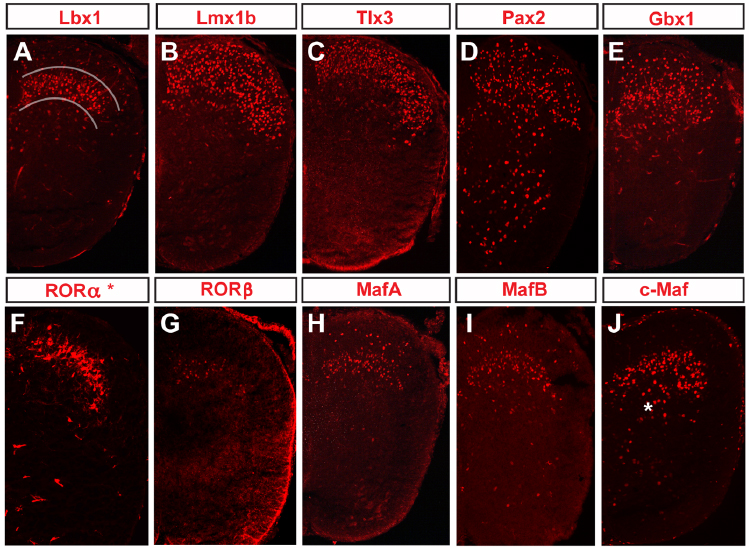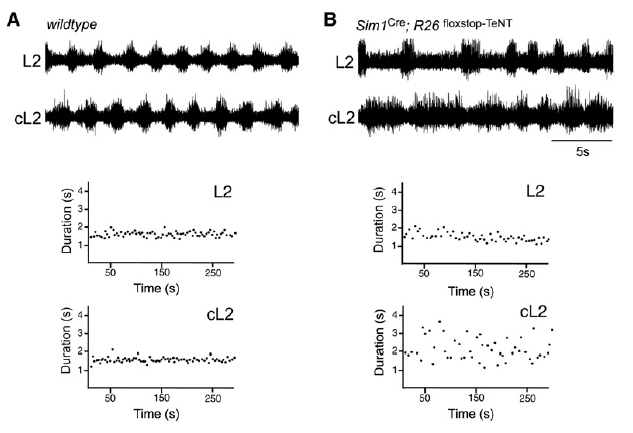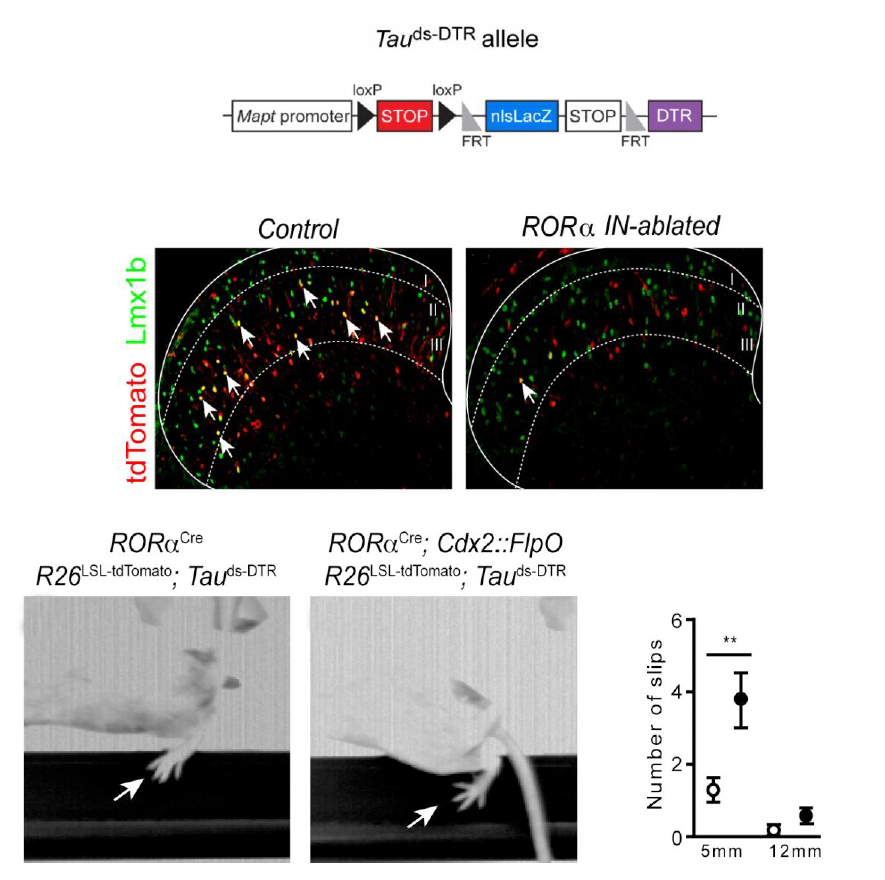Over the past 15 years, the Goulding lab has been at the center of efforts to genetically identify and functionally characterize interneuron cell types in the spinal cord that are the core components of the spinal sensorimotor circuitry. We have characterized the development and specification of these cells in the embryonic and adult spinal cord in order to define the developmental mechanisms that determine key neuronal attributes such as morphology, connectivity and neurotransmitter phenotype.
A second prominent area of research in the lab involves the functionally analysis of the spinal interneurons that generate rhythmic locomotor movements. The Goulding lab has led the way in defining and characterizing many of the key premotor interneuron elements that make up the locomotor central pattern generator (CPG). By generating and harnessing an arsenal of cutting edge mouse molecular genetic tools (knockouts, knockins, Cre- and Flp-mediated recombination) and using them in combination with electrophysiology, behavior and anatomy, we have made significant progress in outlining the cellular make up of the locomotor central pattern generator. In so doing, we have identified the major classes of neuron that generate different features of the motor rhythm needed for locomotion: e.g. left-right coordination, burst robustness, flexor-extensor coordination, step-cycle speed.
Our current interests involve mapping the somatosensory circuits that transmit and process pain and touch. These sensory modalities generate essential protective reflexes and they play key roles in the dynamic control of movement. We are also studying how descending control pathways interface with the spinal sensorimotor circuitry, so as to better understand how spinal motor system is activated and controlled by descending pathways and sensory afferent feedback. These studies are not only important for understanding how the motor system and nervous system function, but also for developing therapeutic strategies that address clinical disorders in humans, including spinal cord injury and chronic pain.
The Goulding lab has pioneered the development and use of novel genetic techniques and tools for circuit analysis. A hallmark feature of our work is the use of a multidisciplinary approach that blends sophisticated mouse molecular genetics with electrophysiology, modern anatomical techniques, imaging, and behavior.


